A signal is a function that carries information. Signals are transmitted by the transmitter and received by the receiver. Any quantity whose variation in time or variation in space can be controlled may be used as a signal. For example, a voltage as a function of time can be a signal. Or, current, or electric fields can be signals.
In circuit boards, we usually use functions of voltage for signals and sometimes functions of current. Wireless communications typically use electric fields or magnetic fields as signals. Fiber-optic communications use light intensity as a function of time as a signal. Many things are used to signal information in electronics.
Signals can be periodic meaning that they have a pattern that repeats over time, or they can be aperiodic or irregular. An example of an aperiodic signal is your door bell. There are no regular intervals between rings of your door bell unless someone is messing with you. An example of a periodic signal is the musical note C, which is a sound sine wave of whatever frequency makes the note C. The air pressure crests and valleys arrive at you ears at regular intervals until the music changes to a different note.
Signals can also be continuous, where they have a value defined for every instant of time, or they can be discrete, where they are only defined at certain times. An example of a continuous signal would be a musical note played on a guitar. An example of a discrete signal would be the output of a digital sound recording system that samples the sound from that guitar at 48 kHz (records the sound every 48 thousandth of a second).
Basic Irregular Signals
Two common irregular signals are the step function and the pulse function. The step function describes a signals that starts in one state, and at a particular time it changes to another state. An example of this is a light bulb turning on. It is off until you flip the switch, and then it turns on. The pulse function describes a signal that is in one state, and at a particular time it changes to another state, and then at a later time it goes back to the original state.
Step Function
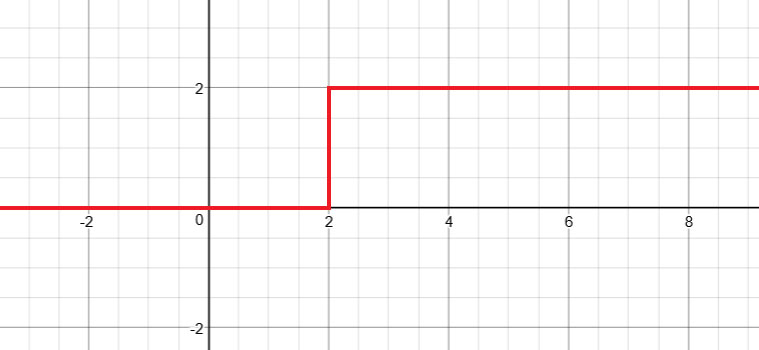
Pulse Function
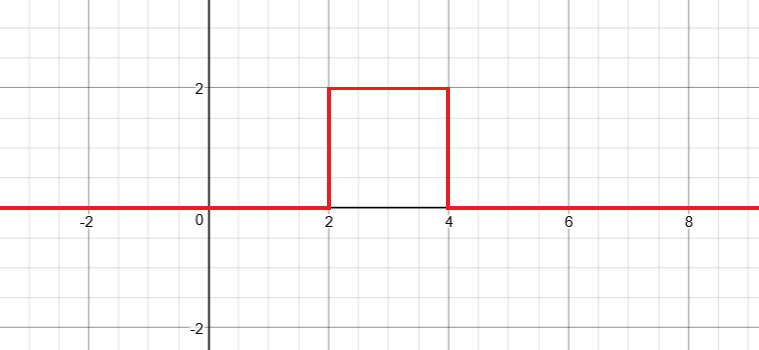
Additional common aperiodic signals are the exponential rise and the exponential decay. These functions occur with the charging and discharging of capacitors and inductors.
Exponential Decay (Green) and Exponential Rise (Blue)
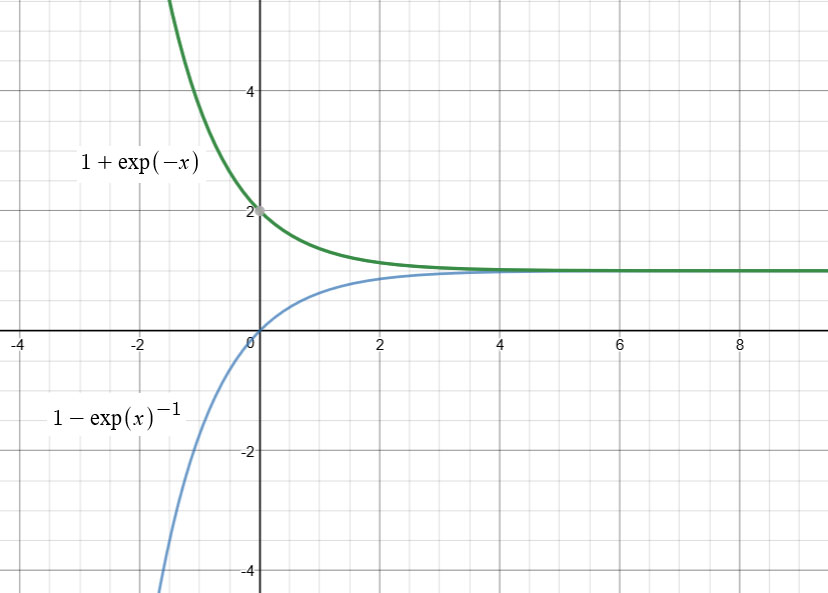
Basic Periodic Signals
Common periodic signals are the sine wave, the square wave, and the triangle wave. Sine waves are extremely important as you will see when we start talking about Mr. Fourier who demonstrated that all periodic signals can be described as a collection of sine waves. Digital signals in electronics are square waves. And, triangle waves show up in timing circuits and switching power converters. There are of course an infinite number of different periodic signals, but these are the basic, common ones.
Sine Wave

Square Wave

Triangle Wave

Periodic Signal Terminology
Refer to the diagram below when reading the list of terminology for periodic signals.
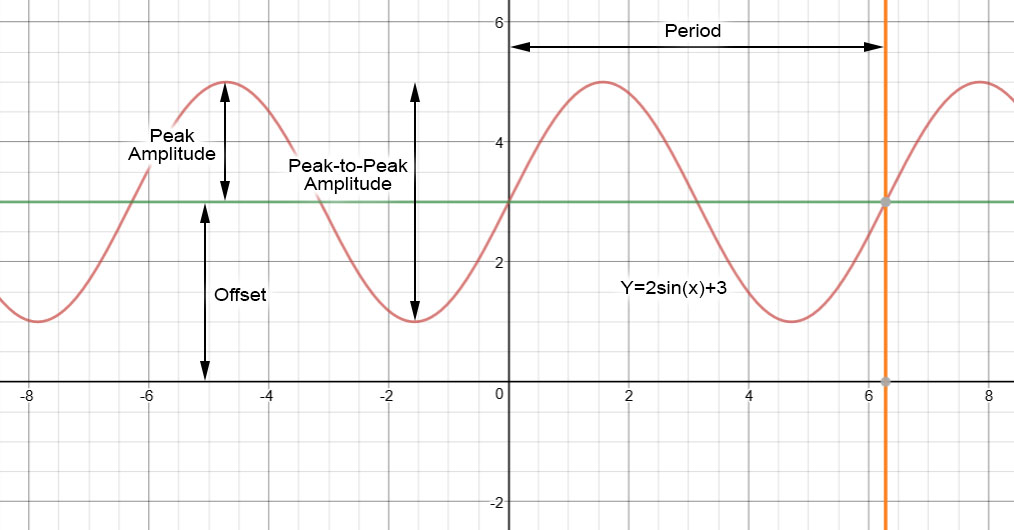
Period
- Units: Seconds (s); Symbol: T
Period is the time for one cycle of the signal.
Frequency
- Units: Cycles per second, Hertz (Hz), also radians per second
- Symbol: F or f for Hertz (Hz), or ω (omega) for radians per second
Frequency is the inverse of Period. Frequency = 1 / Period
Phase
- Units: Degrees, or radians
Phase is the position in a cycle. A full cycle is 360 degrees or 2π radians. So, a quarter cycle is 90 degrees or π/2 radians.
One can also talk about the “phase difference” or “phase shift” between two signals. Or, that two signals are “out of phase”. In the picture below, the green signal is phase shifted 90 degrees relative to the red signal, and the black signal is phase shifted 180 degrees relative to the red signal. See how with a 180 degrees phase shift, the black signal is now a mirror image of the red signal?
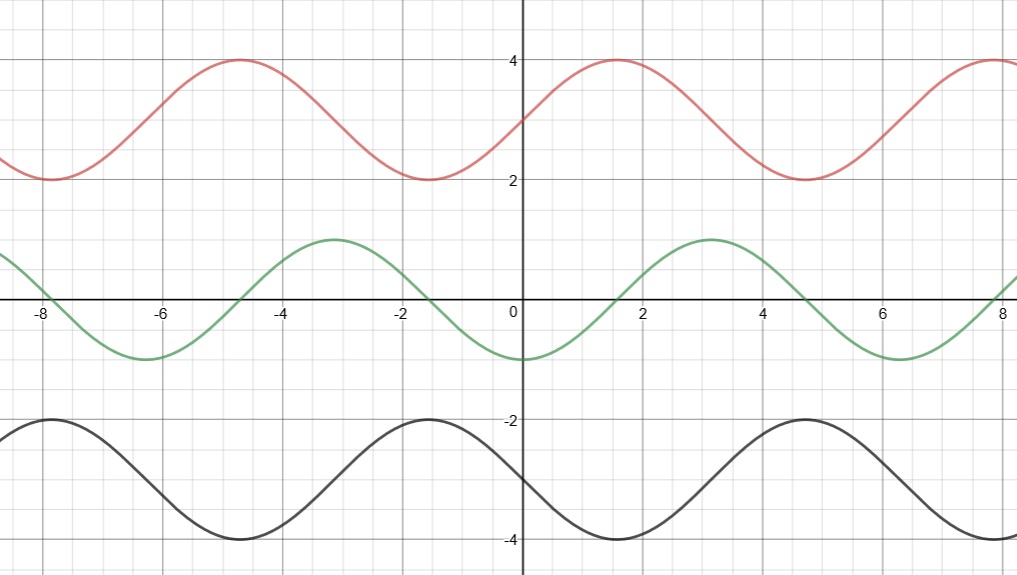
Amplitude
- Amplitude is the magnitude of the signal.
- Amplitude is described as peak amplitude, peak-to-peak amplitude, or root mean square (RMS) amplitude
- Peak Amplitude is measured from the centerline of the wave to the positive peaks.
- Peak-to-Peak Amplitude is measured from the negative peaks to the positive peaks
- RMS Amplitude is the square root of the mean average of the squared value of the peak amplitude.
Yeah, RMS amplitude makes my brain hurt too. What demented fool would use such a silly, convoluted way to measure amplitude, you ask? The answer is to calculate power. Power is voltage times current, but what if voltage and current vary over time like with AC power where they are sinusoidal? In the case that voltage and current vary periodically over time, power is equal to the RMS amplitude of voltage times the RMS amplitude of current.
RMS Power = RMS Voltage x RMS Current
Do not confuse RMS amplitude with the average value of the signal. They are not the same.
RMS amplitude is different depending on the shape of the periodic signal. RMS amplitude for a sine wave is the peak amplitude divided by square root of 2. RMS amplitude of a square wave is equal to the peak amplitude.
Duty Cycle
- It is the fraction or percentage of a cycle in which the signal is active.
- Typically is just applied to square waves where it is the percentage of a full cycle (period) occupied by the positive (on) pulse. So, if the positive (on) pulse is 25% of the period, and the negative (off) pulse is 75%, then the duty cycle is 25%.
- The width of the on pulse added to the width of the off pulse equals the full period (100%)
- A 100% duty cycle means the signal is always on and so is no longer a periodic signal.
- If the bottom of a square wave is at 0, then the average value is the duty cycle times the peak-to-peak amplitude.
Square Wave: VAVG = Duty Cycle * (VHIGH – VLOW)
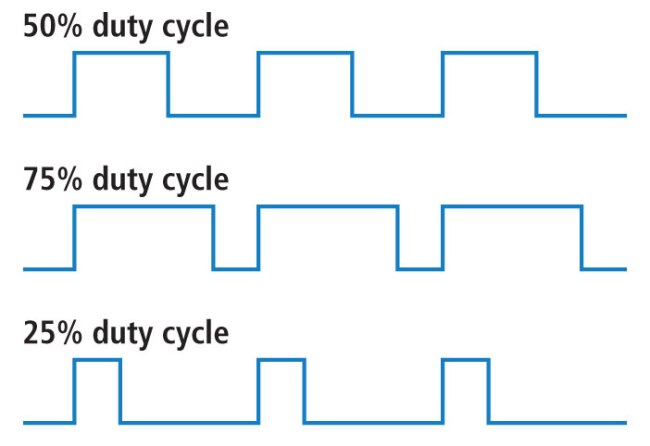
Offset
- Offset is how far the centerline of the waveform is from zero.
- If y = 2 sin(x) +3 as in the main picture above, then the offset is 3.
Next: Resistors
Here’s a great video from Brian Van Veen on Youtube that goes into more depth on periodic signals.
